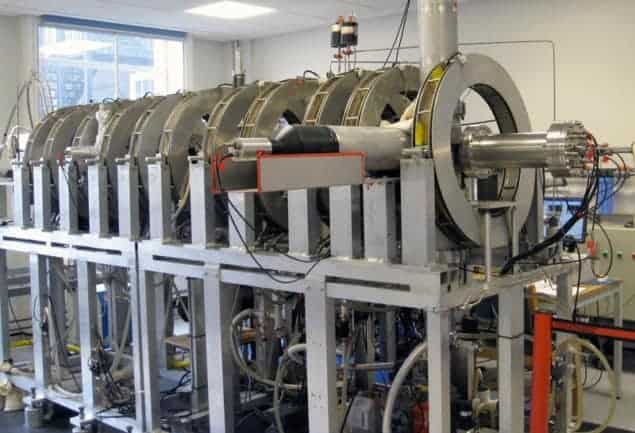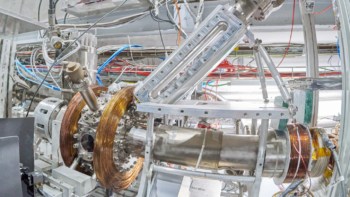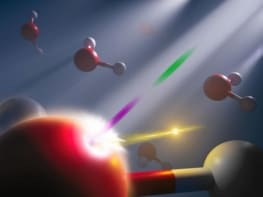
Positronium is the atom-like bound state of an electron and its antiparticle the positron – and therefore has no net electrical charge. But physicists in the UK are scratching their heads after finding that positronium interacts with matter as if it were a lone electron, with the mass and positive charge of the positron seemingly invisible. This surprising discovery will spur researchers to find an explanation, and may have consequences from medicine to astrophysics.
Positronium is often regarded as the lightest neutral atomic species. Like a normal hydrogen atom, its nucleus is orbited by a lone electron, but the proton of the nucleus itself is replaced by the positron.
Positronium is an important entity in various disciplines. In medicine, for example, positrons are used to image chemical-reaction pathways inside living cells, in a technique known as positron emission tomography (PET). Yet over 80% of the crucial gamma rays generated in PET scans are from decaying positronium. Meanwhile, in astrophysics, decaying positronium accounts for over 90% of the gamma rays coming from the Milky Way’s centre.
Scarcity of scattering knowledge
Since positronium lives long enough to scatter off other matter before decaying, scientists involved in such disciplines need to understand its scattering properties. Unfortunately, both theory and experiments on these have been hard to come by.
Now, Gaetana Laricchia of University College London and colleagues have recorded the first widespread velocity data for positronium scattering off a variety of atoms and molecules. In their experiment, they use electric and magnetic fields to guide positrons emitted from sodium-22, a radioactive source, to a gas cell. Some of the positrons pick up an electron from the gas, creating a beam of positronium that travels toward a gas target. The researchers used 10 different targets to scatter the positronium, including helium, nitrogen, oxygen and krypton.
The results were not what they expected. Despite positronium being neutral and twice the mass of an electron, its scattering cross section – a measure of the interaction probability as a function of velocity – always resembled an electron on its own.
‘Spectator’ particle?
Laszlo Sarkadi, a nuclear physicist at the Hungarian Academy of Sciences who has previously studied positronium scattering, says the discovery will prompt physicists to examine the detailed dynamics of the scattering, which he thinks cannot be approximated, like other collision systems, to a two-body interaction. Nonetheless, be believes the likely solution is that the positron in the positronium is merely behaving as a “spectator” particle. “The different behaviour of the electron [could be] explained by the polarization of the target during the collision,” Sarkadi adds.
Laricchia agrees that the positronium’s electron is somehow dominating the interaction, but says: “The reason is not yet known, and we hope that our work will stimulate further research.”
The research is published today in Science 330 789.



